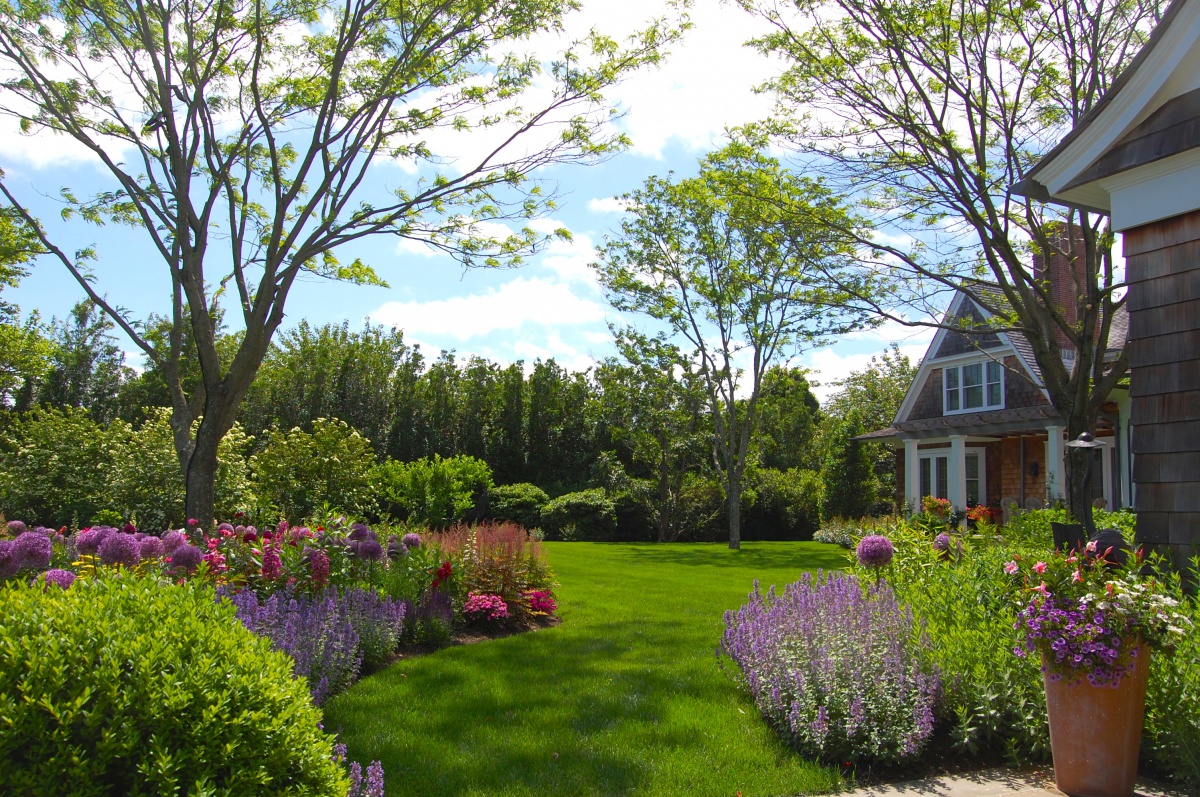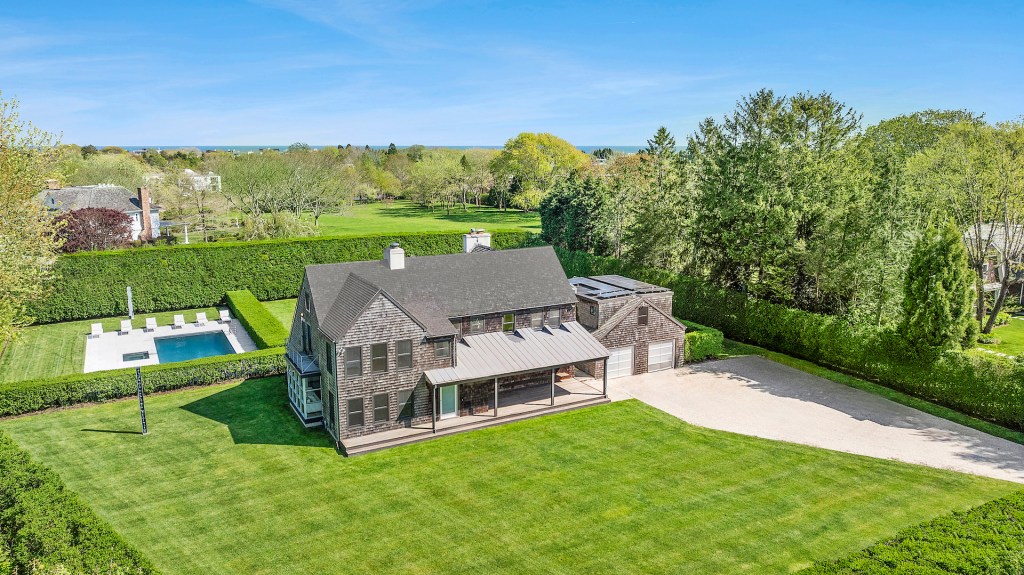Hamptons Gardens of Unlimited Delights

The East End is a treat for the senses, as the landscapes stun in their beauty and variety. It sometimes feels like just about everything grows here, somewhere. From the stately trees that dignify our
villages to the beach grass that sways in the ocean breeze to the multifaceted gardens that transform even an outstanding property to the realm of otherworldly, the East End is a botanical paradise that might seem to the casual observer to have sprung fully-formed from the earth.
But, as the saying goes, gardens are not made by sitting in the shade. Sometime in the distant past, somebody planted those stately trees. The earth itself was moved, the soil improved. Even that beach grass is probably more nurture than nature. Our beautiful surroundings are the result of vision and cultivation. And if you want your East End home to share in the natural splendor, you have to plan for it and help it along, from design to building to planting to maintenance. Frederico Azevedo, whose Bridgehampton company Unlimited Earth Care has been designing gardens on the East End for 21 years, has a special understanding of the particulars of building beautiful natural environments here—as well as knowing the aesthetic trends that are essential in planting the perfect East End garden.
Dan’s Papers: What have you found to be the latest trends in landscape design with your Hamptons clients?
Frederico Azevedo: Multicolor gardens are totally in! My clients are searching for more vibrant colors with different kinds of textures. The growing trend has been toward mixed hedges not only with evergreens, but also with deciduous trees and shrubs for screening around properties.
Describe your style of landscape design, and how you balance that with customer wishes.
I definitely have a signature garden style that is very simple and natural looking. Basically the idea is to “imitate” what nature is already doing so my designs perfectly fit within the natural surroundings. I listen to all my clients very carefully in order to translate those needs, wants and ideas into the most satisfying and therefore successful design possible.
Talk about some of the more remarkable landscapes you’ve created.
I find that what really sticks with people are designs that feel slightly mysterious and fantastical—something they would not have believed existed until they saw it. At first you may spot a long, low wall of magnificent, multicolored flowers and think it’s simply a garden. But a closer look reveals the flowers are screening off a pathway of lush, green grass “carpeting,” inviting you to follow it. And at the end, you find a garden element such as a tree or another garden. It gives the sense that you’re looking into another world that exists on its own, yet is very much a part of the environment.
Landscape design seems like a world of limitless possibilities, particularly here in the Hamptons. How do you help clients narrow down the options?
It’s important to know your limitations and commit to the project. Sustainability in the natural environment is key. Plants need space to grow—overloading a garden is a real concern. Maintenance is vital as well to preserve the aesthetic of your home. Accessorizing your landscape with statuary and the like can be fun, but in moderation. The best results come from a design that can be lived in. Too many “unnatural” elements can make the landscape feel uncomfortable.
What special challenges does the environment of the East End pose for planning, building and maintaining gardens?
Long Island experiences the full range of seasons, and therefore weather in general plays a part in all my garden designs. Keeping gardens accessible for regular maintenance and planning for water run-off is all part of the way I do things. Annual flowers are fine for a garden that will see regular revisions, but perennials are often more desirable for clients who wish to maintain a defined aesthetic, long-term. I think most clients would agree that the greatest challenges lay with the wildlife—deer in particular. They are an integral part of the local ecosystem though, so it’s imperative to safely deter them from your property.
What are some strategies that you use to make your new gardens appear as if they’ve been there a while, or like they’re naturally occurring?
Timing is everything—although planning and preparation never hurt, either. It’s important to think about every stage that the project will go through, not just the end result.
Which flowers will bloom first? Which will achieve the greatest height? Will the natural life cycle of the plants leave the garden looking barren at some point? I try to arrange my designs so that they come to life in a pre-determined order so that as each flower blooms, it serves a purpose without detracting from what’s
already there.
Is there something that you consider a signature for your work—perhaps an idiosyncratic planting or some other unusual feature that you use?
Bright, bold colors are a huge part of what I do. In nature, standout colors are everywhere. The
importance of color cannot be overstated. Just about any tree can be green, but when their leaves
turn that reddish-orange, people will come from miles away to appreciate its beauty.
Nature doesn’t consider itself gaudy or hold back—neither should you.
From where do you draw inspiration? Are there important landscapes that you findespecially
influential?
I’m inspired by everything that has beauty within it. I love to visit all different places and try to see the gardens everywhere I travel. Every garden that I visit is a different experience.
I’m also very motivated by art. Because I’m Brazilian, [pioneering landscape architect] Roberto Burle Marx is my master. I love to read about his life and research his projects.
How does it feel to work in a place where you often have unlimited resources—say, to be able to work with full-grown trees and shrubs and essentially have a mature garden from the moment of completion?
There’s certainly a sense of immediate gratification and satisfaction both for myself and for the client in seeing a landscape transform dramatically almost overnight. That having been said, necessity is the mother of invention—working within budgetary and time constraints can lead to creative and awe-inspiring results. And there is something uniquely magical about watching your dream project slowly come to life.
Read Frederico Azevedo’s Notes from the Garden


